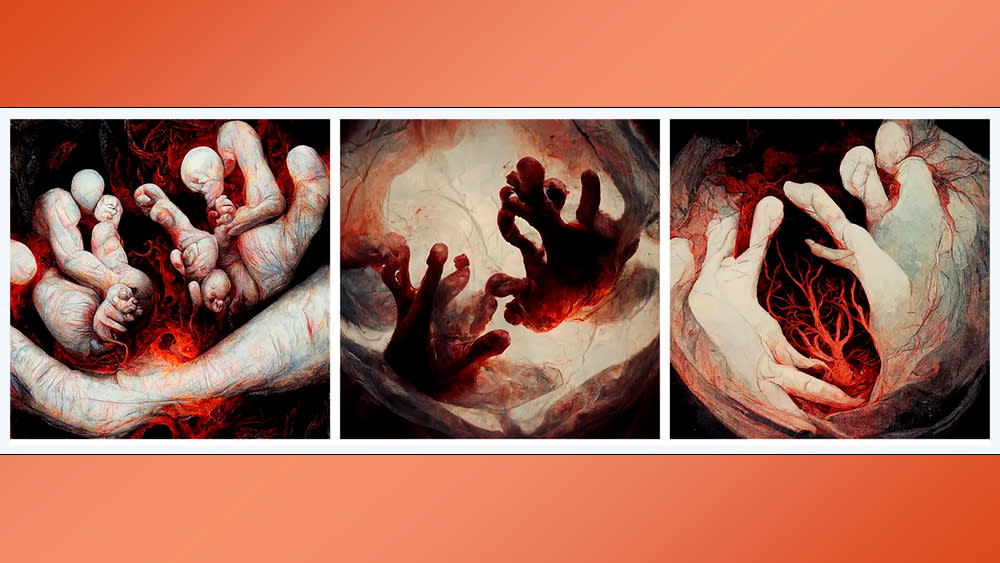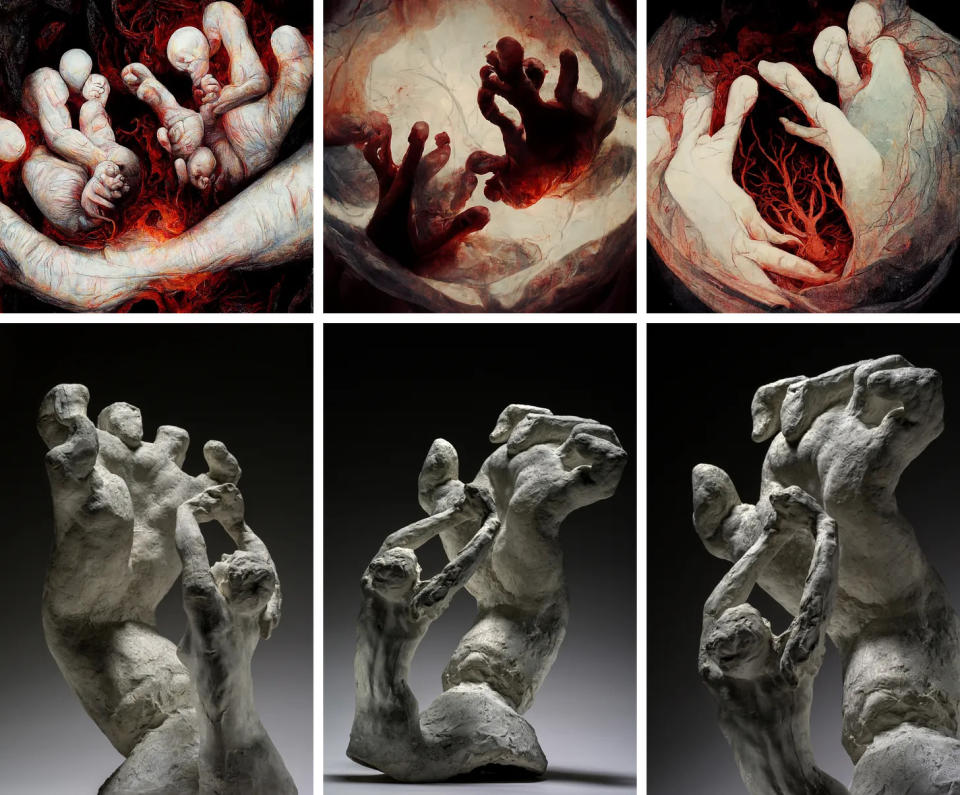Disturbing images show AI art still isn't accessible enough

AI art has been hugely controversial, but one project has investigated whether it could also have some little-explored benefits for accessibility. The artist Cosmo Wenman organised an experiment in which blind researchers used Midjourney, one of the best AI image generators.
The 4,110 images they generated are often dark and disturbing. But Wenman hopes the study could inform developments that could allow generative AI to create a new form of accessibility for artists who are blind.

Wenman creates tactile art exhibits and works with companies that specialise in universal access. For this project, he worked with blind researchers Brandon Biggs, Lindsay Yazzolino and Joshua Miele, who generated images using a range of text prompts.
Miele attempted to create works in the style of the Auguste Rodin based on his experience of having touched some of the sculptor’s works. One prompt was "Thick limbs and stubby fingers, short men and twisted, interlocking partially embedded baby body parts, straining and struggling despite inevitable frustration and failure with infernal forces held back against barely better odds."
The results may look disturbing, grotesque even, but Wenman told Artnet News that this is not what Miele had intended. "If he was using it on his own, he wouldn’t have known he had done that,” he pointed out. And yet, Wenman notes that the results do appear to be inspired by Rodin when you look at them closely, showing “weird and thematic intersections” with Rodin's work that are not obvious to the eye.
In a blog post he wrote: “Rodin’s exploration of the expressivity of irregular, oddly posed, and loosely modeled hands seems simpatico with Midjourney’s much-derided emphasis on gesture over accuracy, the emphasis Miele’s text clearly called for.”

Yazzolino, meanwhile, described Leonardo da Vinci’s The Last Supper using a prompt that read “famous painting depicting Jesus with his followers during the night before he is put on the cross.” The results do not look like what was intended and reveal some surprises.
"Like Leonardo’s composition, several images generated from Yazzolino’s description accommodate the viewer by arranging Jesus and his disciples opposite us, facing us, with Jesus in the center," Wenman says. "But some do much more. In one version, with a cross marked in ash on his forehead, Jesus looks directly outward at us through bloodied, wounded eyes."

Wenman says that as the only seeing person on the team, he was fascinated by the visual illusions that emerged outside of the researchers' intentions. He hopes that as AI image generators become more precise, they could become more useful for blind artists. And, while at the moment blind users can still not evaluate the images generated, the addition of image-to-text functionalities could change that, since AI will also be able to provide a source of feedback on the generated images.
"The more a blind person can rely on something like text-to-image to be precise, the more they might find some value in expressing themselves," he said. There are plans to create an exhibition of the pieces generated in the experiment and the researchers are considering another collaboration to test text-to-3D software.
To learn about how to use AI image generators like Midjourney, see our roundup of AI art tutorials. You might also want to see what's new in DALL-E 3 and in Adobe Firefly's new models.

